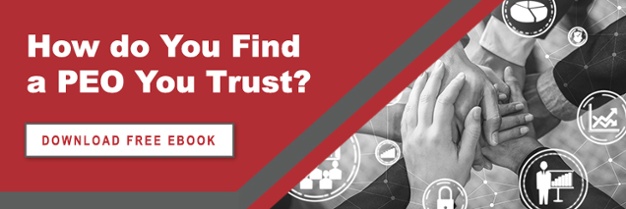
Establishing workplace safety shouldn’t only come into play when reacting to incidents—it should be about creating a proactive, prevention-first culture. From small businesses to large corporations, workplace safety risks can come in many forms—from faulty equipment to insufficient employee training.

By developing a robust and informed strategy, business owners and HR professionals can create a secure and healthy environment for their teams while minimizing costly disruptions.
In this post, we will walk you through practical steps to identify workplace safety risks and implement effective preventive measures that protect your employees and your business.
Identifying Potential Safety Risks in Your Workplace
The foundation of workplace safety lies in identifying potential hazards before they result in accidents or injuries. Here are actionable steps to help you uncover risks in your workspace.
1. Conduct Regular Safety Audits
Perform routine safety inspections to uncover issues like faulty equipment, poor ergonomics, tripping hazards, or chemical exposures. Look beyond obvious risks—check ventilation systems, fire exits, and structural integrity to ensure every part of the workplace is safe. Use a checklist to standardize your audits and ensure nothing is overlooked during inspections.
2. Gather Employee Feedback and Encourage Reporting
Your employees are often the first to notice safety issues—but only if they feel confident sharing their concerns. By establishing an open-door reporting policy or anonymous reporting tools, you encourage honest feedback.
3. Conduct Job Hazard Analysis (JHA)
Examine specific job tasks and break them down step by step to identify associated risks. For instance, consider a food-processing plant—while slicing meats may seem routine, it poses risks like cuts or repetitive strain injuries. Mitigating these risks can save time, money, and stress.
4. Prioritize Employee Training and Education
Safety starts with awareness. Provide employees with thorough training on best practices, equipment handling, and emergency preparedness. Regular workshops and updates can reinforce this knowledge. Well-informed employees are more likely to adhere to safety protocols and contribute to a culture of safety.
5. Monitor Incidents and Near-Misses
Accident logs and near-miss reports are invaluable for identifying patterns and high-risk areas. Analyze these incidents to uncover root causes and take corrective action before issues escalate.
6. Seek Guidance from External Safety Experts
Hiring third-party professionals to assess your workplace can provide a fresh perspective and ensure nothing is missed. Safety consultants can deliver unbiased evaluations that internal teams may overlook. Different industries have different risk factors, and they can help develop the recommendations tailored to your industry.
Taking Proactive Measures to Protect Workers
Once you’ve identified potential hazards, it’s time to implement measures that eliminate or reduce risks.

1. Eliminate or Substitute Hazards
Whenever feasible, remove risks entirely. For example, replace toxic cleaning chemicals with eco-friendly alternatives or automate dangerous manual tasks using machinery. Reducing contact with potentially harmful tasks will significantly reduce any chances of injury.
2. Implement Safety Controls and Signage
Install safeguards such as machine guards, physical barriers, and ergonomic workstations to minimize exposure to hazards. Back these up with clear signage to warn employees of potential dangers, like slippery floors or high-voltage equipment. For example, factory floors often use lock out/tag out systems to reduce risks around heavy machinery, while colored floor markings indicate safe paths and danger zones.
3. Update Workplace Procedures
Review and revise outdated workflows to ensure safety is integrated into your daily operations. Communicate updates effectively and enforce compliance through regular check-ins and include them in your employee handbook. Use digital tools like training platforms or mobile apps to provide real-time updates on safety procedures.
4. Provide Personal Protective Equipment (PPE)
Make sure employees have access to proper PPE, such as helmets, gloves, goggles, and masks, wherever applicable. Ensure it’s not just available but also properly used and maintained.
5. Strengthen Employee Training Programs
Introducing hands-on demonstrations and simulations to bring safety practices to life. There’s a difference between reading about proper lifting techniques and practicing them under supervision. Conducting regular sessions or meetings can help reinforce and remind workers about these practices.
6. Develop and Practice Emergency Response Plans
Prepare your team for worst-case scenarios—fires, medical emergencies, chemical spills—with comprehensive response plans. Conduct drills to keep everyone prepared and confident in their roles.
Partner with HR Experts for Safety Solutions
While these steps are essential, implementing a comprehensive workplace safety strategy can feel overwhelming—especially on top of your responsibilities as a business owner or HR professional. That’s where an HR partner can help. Organizations like PRemployer specialize in integrating best practices for workplace safety into your existing operations. From crafting safety policies to conducting training and assessments and work as your extended team to ensure compliance and employee well-being.
By identifying workplace safety risks and implementing preventive measures, you lay the foundation for a safer, more productive environment that benefits everyone—from management to employees. Preventing incidents not only protects your team but also enhances morale, reduces downtime, and boosts efficiency.
Reach out to the experts at PRemployer today to learn how you can safeguard your employees and your business.

